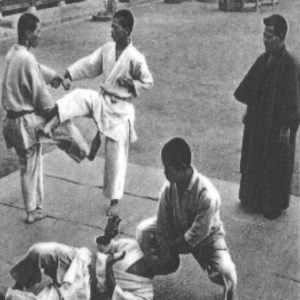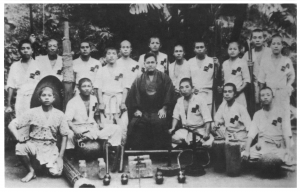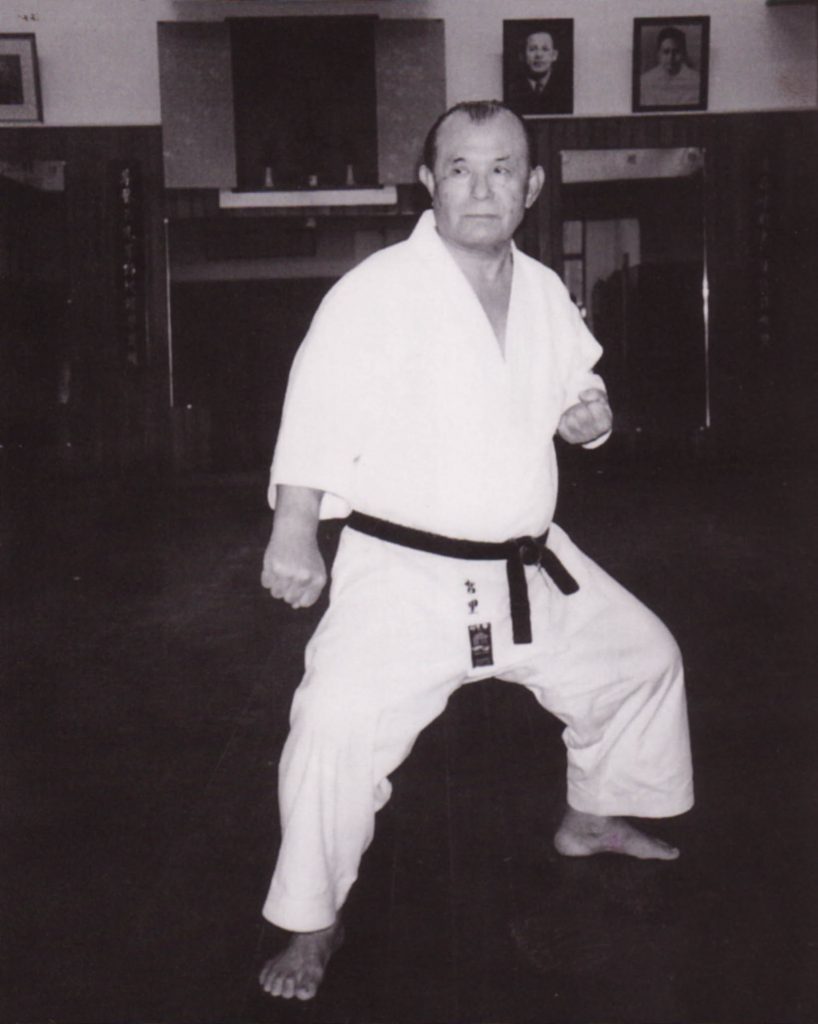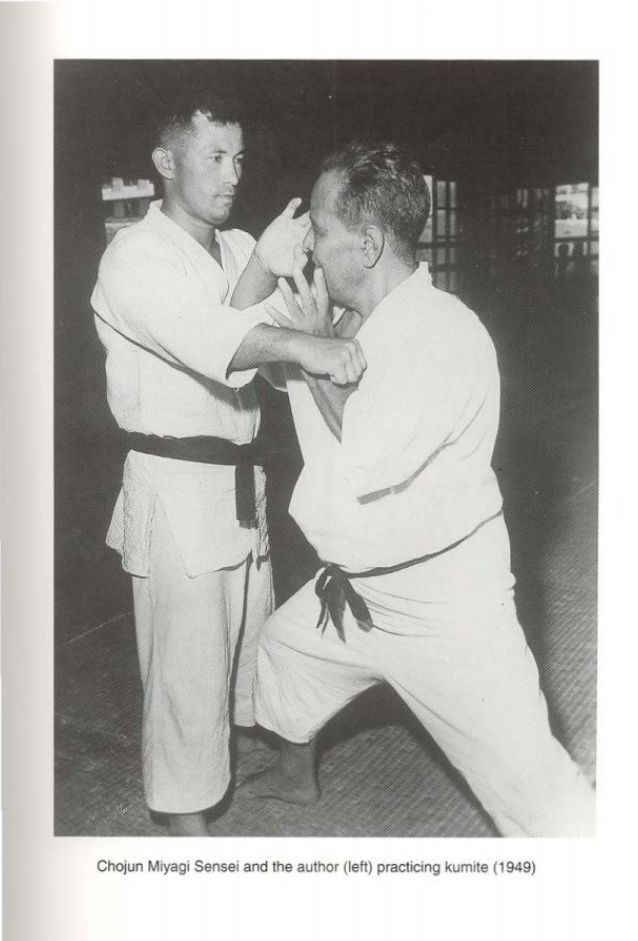The History of Karate
Okinawan Goju Ryu Karate-Do
The fighting traditions of Okinawa
Okinawa, a once-thriving hub of the Ryukyu Kingdom, held a pivotal role from the 14th to the 16th century as a vital trading nexus connecting China and Southeast Asian nations. The extensive sea voyages required for trade exposed Ryukyu seamen and traders to the perils of pirates and bandits, compelling the Ryukyuan people to develop Bujutsu (Martial Arts) to ensure their safety. The interactions between Okinawa, Southeast Asia, and China significantly contributed to the evolution and refinement of Ryukyu's Bujutsu, which crystallized into Naha-Te, Shuri-Te, and Tomari-Te styles collectively known as To te or Chinese hand. Eminent Buji (masters of combat tradition) emerged in each region, meticulously refining techniques and passing down their expertise.
In 1609, the Satsuma Samurai clan of Japan invaded the Ryukyu Kingdom, imposing a ban on the traditional fighting art, Te, forcing practitioners underground. The post-incorporation of Okinawa into Japan marked a turning point, as the veil of secrecy was lifted, giving rise to Karate-Do (the way of the empty hand). This transition brought Karate-Do into the Okinawan education system during the period between 1868 and 1912 and eventually introduced it to mainland Japan in 1912. Following World War II, Karate-Do diversified into styles such as Goju Ryu, Shorin Ryu, Uechi Ryu, and Matsubayashi Ryu, each encapsulating a distinct approach to this revered martial art.



Kanryo Higaonna
The founder of Naha Te (1853-1916)

Kanryo Higaonna, born in 1853, displayed a keen interest in martial arts from a young age. His journey began with training in Tegumi (Wrestling) and To Te. In 1867, he was introduced to the art of Lohan Gong Fu (Monk fist boxing) under the guidance of Master Seisho Aragaki. Taking his pursuit further, in March 1873, Higaonna embarked on a transformative journey to Fuzhou to deepen his understanding of Chuan Fa.
While in Fuzhou, Higaonna's path crossed with Master Wai Xinxian of the Kojo Dojo, and later with Xie Zhongxiang, also known as Ryuru Ko. Higaonna's dedicated studies encompassed various Gong Fu systems, Confucianism, the works of Sun Tzu, and the Bubishi. After nearly a decade of rigorous training, he returned to the Ryukyu Kingdom in 1882.
Back in Okinawa, Higaonna settled in Naha, where he synthesized his learnings into an innovative approach, blending To Te, Gong Fu styles, and their principles. Initially hesitant to teach his Chuan Fa, Higaonna eventually opened the doors to instruction after 1890. His teachings gained popularity, attracting a new generation eager to learn. Notably, Higaonna imparted his wisdom to prominent figures like Juhatsu Kyoda and Chojun Miyagi. By 1927, his system became known as Naha Te.
Beyond his martial prowess, Higaonna was known for his noble character and strong sense of justice. He emphasized the fusion of physical training with moral philosophy, often referencing the Bubishi and Sun Tzu's strategy. Kanryo Higaonna's legacy extended to his students, and his impact on Karate history endures. In 1916, at the age of 62, he passed away, leaving behind a profound influence on the study and mastery of Chuan Fa, forever remembered as a true master whose spirit lives on.
Chojun Miyagi
Founder of Okinawan Goju Ryu (1888-1953)



Chojun Miyagi, born in 1888 to an affluent family, embarked on a transformative journey that would shape the course of Karate-Do history. Recognising the importance of physical and spiritual strength, Miyagi's mother introduced him to Master Ryuko Aragaki, a Tomari te instructor, at the tender age of 11. His path took a defining turn at 14 when Master Aragaki introduced him to Master Kanryo Higaonna. With a burgeoning passion for Naha-te, Miyagi's family wholeheartedly supported his pursuit, allowing him to dedicate himself to full-time study.
In 1910, Miyagi was drafted into the military for two years where the training was severe, but the strength gained though his practice of Naha-te benefited him and he soon came to be noticed by his superiors and earned their respect. The passing of Master Higaonna, three years after Miyagi's return to Okinawa, marked a transitional phase. During this time, Miyagi diligently acquired the remaining kata of Naha-te, while also refining his skills through interactions with notable martial artists, including Go Ken Ki, a white crane master.
Miyagi's expertise reached a significant milestone in 1930 when his top student, Jinan Shinzato, showcased Naha Te at the All Japan Martial Arts Demonstration to celebrate Crown Prince Hirohitos succession to the throne. Shinzato's response to inquiries about the style's name led Miyagi to realise the importance of acquiring a formal name for his school and he settled on Goju Ryu. The name, drawn from a passage in the Bubishi, encapsulated the style's harmonious blend of hard and soft techniques synchronised with controlled breathing.
Miyagi's contributions extended to the creation of Gekisai Dai Ichi, Gekisai Dai Ni, and Tensho katas in 1940. These kata, designed for accessibility and learning, played a pivotal role in promoting Goju Ryu. Amid the ravages of World War II, Miyagi faced profound losses, including family members, friends, and students. As Okinawa endured the turmoil of war, Miyagi's efforts to document the history of Goju Ryu were hampered by the island's devastation.
Post-war, Miyagi continued his legacy, teaching at Okinawa's Police Academy and reviving the garden dojo with the assistance of Eiichi Miyazato, Koshin Iha, and dedicated students. His unyielding commitment to refining and promoting Naha Te culminated in the establishment of Okinawan Goju Ryu Karate-Do, a testament to his visionary spirit. Miyagi's teachings emphasized holistic growth, nurturing body, mind, and spirit. He personified humility and was acknowledged as a Karate Do genius, earning the distinguished title of Bushi, reserved for revered karate masters in Okinawa. Chojun Miyagi, a noble-hearted man, remains an integral part of Okinawa's cultural heritage, his legacy echoing through the realms of Karate-Do.
Eiichi Miyazato
The founder of the Jundokan (1922-1999)



Born in 1922, Eiichi Miyazato embarked on his martial arts journey in 1936 under the guidance of his father, who was once a student of Kanryo Higaonna, immersing himself in the disciplines of Karate-Do and Judo. His thirst for knowledge led him to Master Miyagi, delving into the teachings of Goju Ryu in 1938.
As World War II erupted, Miyazato was drafted into the Japanese Army. He worked in the financial section, however continued to train Karate-do every day which earned him the respect of his fellow soldiers. Despite being asked to teach Karate to troops during a weapons shortage, he staunchly declined. Upon returning to his war-torn homeland, he faced personal tragedy but remained devoted to his art.
The passing of Master Miyagi in 1953 marked a pivotal juncture. Eiichi Miyazato rallied his fellow students, raising funds to expand the dojo. Stepping into leadership, he became Sensei at the garden dojo and chief instructor at the Police Academy, upholding Master Miyagi's legacy.
In 1955, the Goju Kai convened to choose a successor to Chojun Miyagi. Eiichi Miyazato's dedication won the endorsement of Mr Kin Miyagi, the late Master's son, officially anointing him as Chojun Miyagi's true successor.
To accommodate a growing student body and secure Goju Ryu's future, Eiichi Miyazato established the "Okinawan Goju Ryu Karate-Do Kyokai" in 1957. The dojo, named "Jundokan," conveys the essence of following the way. A testament to its popularity, a new dojo was constructed in 1969, becoming one of Okinawa's most spacious and well-equipped training grounds.
Miyazato's strength was matched by wisdom and humility. He emphasised humility as Karate-Do's greatest gift. Renowned in Okinawa and Japan, he chaired the Okinawan Ken Karate-Do Renmei and the Okinawa chapter of the All Japan Karate Federation. Miyazato's impact extended beyond Karate-Do; he excelled in Judo, serving as the Vice Chairman of the Okinawan Ken Judo Renmei. As Jundokan's head, Eiichi Miyazato fostered Goju Ryu's growth and produced numerous skilled Karate-ka. He embodied Jundokan's principles, dedicating his life to Master Miyagi's teachings and leaving an enduring legacy.
